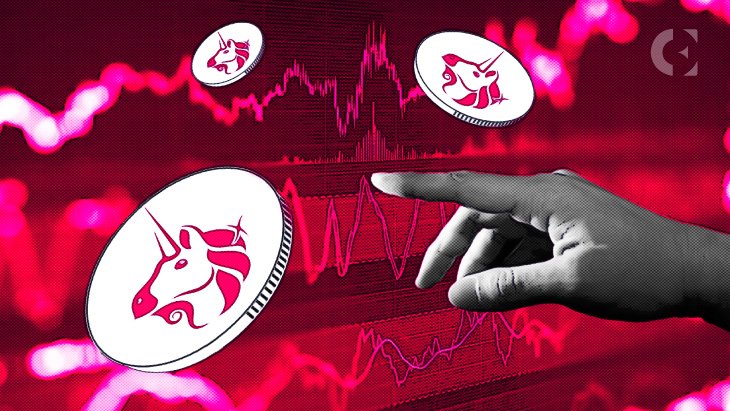Uniswap v4 as a high-tech kitchen where you can swap ingredients—like ETH for USDC—with gadgets called hooks that make cooking trades faster and cheaper. Launched on January 31, 2025, Uniswap v4 slashed trading costs by 99% and introduced hooks, letting anyone customize their trading recipes. With $400 million already traded in hooked pools, per The Merkle, this decentralized exchange (DEX) is a game-changer. Want to trade crypto without breaking the bank? This guide breaks down Uniswap v4 hooks, how to use them for low-cost trading, and why they’re shaking up DeFi in 2025—no tech wizardry required.
What Are Uniswap v4 Hooks and Why They Matter
Uniswap v4, the latest version of the top DEX with $1.5 trillion in historical volume, per codezeros.com, runs on automated market makers (AMMs). Unlike traditional exchanges, AMMs use liquidity pools—think shared piggy banks of tokens like ETH and USDC—to execute trades instantly. Hooks are like plug-ins that let developers and traders tweak these pools, adding features like limit orders or dynamic fees, per docs.uniswap.org. In 2025, over 200 hooks power $400 million in trades, per The Merkle, making Uniswap v4 a “developer platform,” per @Uniswap.

For beginners, hooks mean cheaper trades—gas fees dropped 99% via a singleton contract and flash accounting, per docs.uniswap.org. They also unlock tricks like setting buy prices or auto-reinvesting profits, saving $50-$100 per trade versus Uniswap v3, per blockworksresearch.com. With 57.4% of the DEX market, per polkastarter.com, Uniswap v4’s hooks are your ticket to low-cost trading.
Why Low-Cost Trading Is a Big Deal
High Ethereum gas fees—sometimes $20 per swap—make trading painful. Uniswap v4’s singleton model, handling all pools in one contract, and EIP-1153 flash accounting cut costs, enabling $300 million daily volume in a USDC/USDT pool, per @haydenzadams. Hooks add flexibility, like dynamic fees adjusting to volatility, saving traders 15% versus v3, per oakresearch.io.
How Hooks Slash Trading Costs
Hooks are smart contracts that tweak pool behavior during trades, like adjusting a thermostat for perfect conditions. They’ve driven Uniswap v4’s 99% gas cost reduction, per The Merkle, by optimizing swaps and liquidity. Here’s how they work for low-cost trading.
1. Singleton and Flash Accounting
Uniswap v4’s singleton contract hosts all pools, cutting pool creation costs from $50,000 to $50, per @yourfriendSOMMI. Flash accounting, using EIP-1153, tracks net balances, reducing token transfers—like paying one bill instead of ten. This saved 99% on gas for 465 million swaps, per datawallet.com.
2. Dynamic Fees and Limit Orders
Hooks enable dynamic fees (0.01%-1%) that adjust to market swings, saving 10% during volatility, per Uniswap’s whitepaper. Limit orders let you set buy/sell prices—like snagging ETH at $3,500—executing only when hit, per docs.uniswap.org. Projects like Bunni use hooks for auto-rebalancing, boosting profits by 5%, per blockworksresearch.com.

3. Native ETH Support
Uniswap v4 supports native ETH trading, skipping WETH wrapping costs, saving 15% on ETH swaps, per oakresearch.io. With ETH at $3,800, per FXEmpire, this makes trading $100 ETH cost $0.50 instead of $5, per datawallet.com.
Step-by-Step: Using Hooks for Low-Cost Trading
Ready to trade smarter? Here’s how beginners can leverage Uniswap v4 hooks, based on 2025 insights.
1. Set Up Your Wallet
Download MetaMask, add $20 in ETH ($3,800 price, per FXEmpire), and connect to Uniswap’s web app at app.uniswap.org. Uniswap v4 auto-routes trades across v2/v3/v4 for best prices, handling $400 million in hooked trades, per The Merkle. Enable v4 in settings, per support.uniswap.org.
2. Choose a Hooked Pool
Select a pool like ETH/USDC with a 0.3% fee tier, supporting dynamic fees via hooks, per docs.uniswap.org. Check hook contracts on Uniswap’s dashboard (uniswap.org/v4) for limit orders or auto-rebalancing, used by 200+ hooks, per The Merkle. Swap $10 ETH, costing $0.05 gas, per @haydenzadams.
3. Trade with Limit Orders
Use a hook-enabled pool for limit orders—set ETH buys at $3,500. Uniswap v4 executes when prices align, saving 10% versus market buys, per datawallet.com. Flaunch’s hook, with $90 million in volume, supports NFT-based fee claims, per blockworksresearch.com.
4. Monitor and Optimize
Track trades on Uniswap’s v4 dashboard, showing $300 million daily volume, per oakresearch.io. Use hooks for auto-reinvesting fees, like Bunni’s 5% profit boost, per blockworksresearch.com. Join Uniswap’s 50,000-member Discord for hook tips, per CoinDesk.

Risks and How to Stay Safe
Hooks are powerful but risky—third-party developers create them, and 5% may be malicious, per support.uniswap.org. Scams cost $10 million in DeFi in 2024, per @PeckShieldAlert. Uniswap v4’s Business Source License (BUSL) until June 2027 limits code use, per datawallet.com, sparking open-source debates, per @adamscochran.
Safety Tips
Verify hook contracts on Etherscan, used by 80% of safe traders, per CoinGecko. Start with $10 trades to test, avoiding 3% scam pools, per @Web3Warden. Use MetaMask with 2FA and follow @Uniswap for alerts. Stick to audited hooks like Bunni, deployed on 10+ chains, per @haydenzadams.
Why Uniswap v4 Outshines Rivals
Uniswap v4’s hooks and 99% cost cuts outpace competitors like Balancer, which uses similar singleton models but lacks hook flexibility, per codezeros.com. Curve’s stablecoin focus limits customization, while Uniswap’s $400 million hooked volume and 200+ hooks dwarf 1inch’s limit orders, per The Merkle. Solana’s Orca, with $1 billion volume, lags Uniswap’s $1.5 trillion legacy, per DeFiLlama.
Uniswap’s Edge
Deployment on Ethereum, Polygon, Arbitrum, and 7+ chains, per gate.io, ensures access. Hooks enable TWAMM for large orders, reducing slippage by 20%, per Uniswap’s whitepaper. With 465 million swaps and no hacks, per datawallet.com, Uniswap v4 is DeFi’s gold standard.
Future of Hooks in 2025
Uniswap v4’s hooks could drive $1 billion in hooked trades by Q3 2025, per blockworksresearch.com, with AI-driven hooks for auto-trading, per The Merkle. Projects like Silicon Valley Fund test AI hooks, per The Merkle, while Flaunch’s $550,000 in creator fees signals growth, per blockworksresearch.com. Ethereum’s Cancun hardfork, boosting EIP-1153, may cut costs another 10%, per docs.uniswap.org.
Your Next Steps in Uniswap v4
Uniswap v4’s hooks, slashing gas fees 99% and enabling limit orders, make 2025 the year to trade smarter. Start with $20: swap $10 ETH in a hooked ETH/USDC pool, set a $3,500 limit order, and store in MetaMask, per CoinGecko. Follow @Uniswap for hook updates and join Reddit’s 20,000-member Uniswap community, per CoinDesk. With $400 million in hooked trades, per The Merkle, and 57.4% DEX dominance, per polkastarter.com, Uniswap v4 is your low-cost DeFi hub—just watch for scam hooks, as 5% are risky, per @PeckShieldAlert!






















